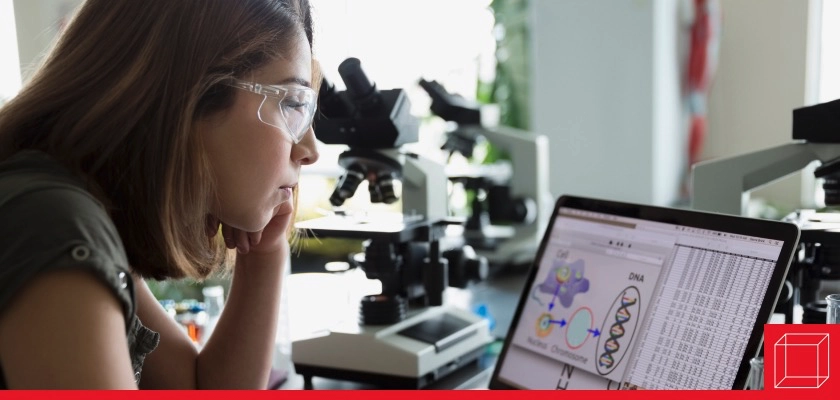Reimagining Virtual Laboratories: Enhancing Practical Learning with True-to-Life Simulations
Incorporating virtual experiments into the curriculum can enhance learning and outcomes for students. Learn from one instructor how Virtual Labs worked as a prep tool in her course.

With many Chemistry educators using virtual labs and simulated experiences during the COVID-19 pandemic, the Royal Society of Chemistry says it’s time to consider how these virtual experiments can be incorporated into the Chemistry curriculum. While students head back to the classroom, these experiences can be used to complement hands-on practical work.
Referencing Gatsby’s Good Practice Science report, the RSC says that a key way to improve practical, hands-on work traditionally done in a wet lab is to use “Virtual enhancements, real experiments … [where] teachers should use digital technologies to support and enhance practical experience.”
So how can you adjust from using virtual experience as wet lab replacement, to wet lab prep in your own course?
The RSC suggests assigning virtual experiments before wet lab in a flipped homework approach or assigning virtual experiments following the wet lab to check students' work.
“Using a simulation in advance so that students are familiar with the process can allow them to concentrate better on manipulating the apparatus during the lesson itself. This experience can also show them what they would expect to happen, so they can identify if something is not correct when carrying out the procedure themselves. With this approach, students are able to be both minds-on and hands-on while carrying out the practical.”
McGraw Hill can help you incorporate the use of Virtual Labs in your course
With Virtual Labs for Chemistry in ALEKS, you can assign real-world simulations to support your students’ hands-on work. These simulations help students learn practical and conceptual skills, check for understanding, and provide feedback. With a corresponding Virtual Lab test bank in ALEKS, you can assign algorithmic questions aligned to each Virtual Lab that motivates students to prepare for lab and provides them with a constructive learning experience.
Dr. Kelly Williams from Roane State Community College chose to use Virtual Labs for Chemistry last year when she was teaching online and needed something to replace the in-person lab experience for her students.
See our interview with Dr. Williams below to learn how she plans to shift from using Virtual Labs as a replacement tool, to a prep tool.
Why will you continue to use Virtual Labs this Fall as you transition back to in-person learning?
They are very valuable for in-person labs for introducing a topic and running through an experiment prior to in-person. Students can become familiar with the equipment and the procedure before seeing it in the in-person lab. I will assign them as part of the lab course, in addition to in-person labs.
How has Virtual Labs improved your student’s comprehension of Chemistry concepts in your course?
Students have learned a lot from virtual labs. The process of working through the labs from the safety of a computer but still needing to make measurements and calculations and use equipment as they would in the in-person lab is a valuable learning experience.
How do Virtual Labs support you as an instructor?
I want more labs to choose from! It would be ideal to have more labs to choose from so we can use virtual labs for all of our chemistry courses.
Want to explore Virtual Labs in ALEKS and see what’s new for Spring ’22? Let’s connect!